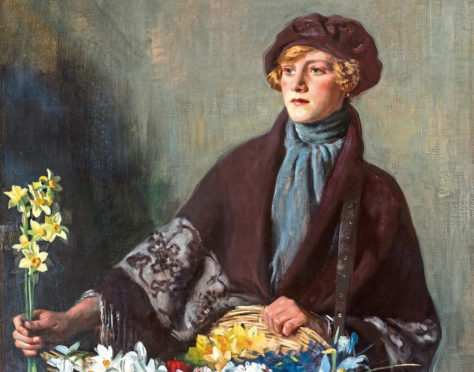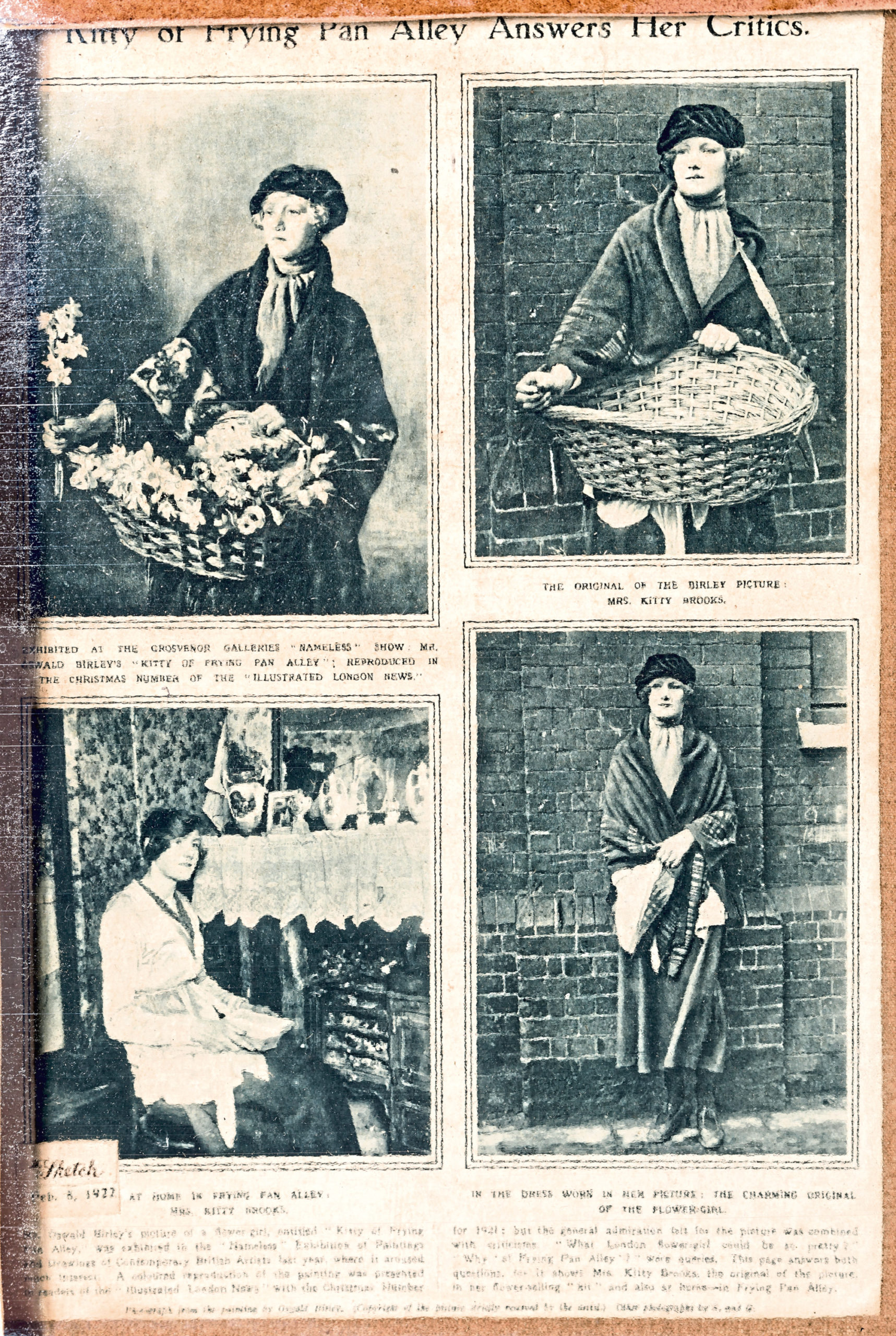This was the cry after Kitty of Frying Pan Alley was first exhibited in 1921. The acclaimed society portrait artist Sir Oswald Birley usually painted royalty, viceroys and prime ministers. Kitty was already a special choice.
Kitty lived in London and was a flower seller, a recognised profession in the early 20th Century. Fresh bunches of colourful blooms were sold from baskets in Piccadilly Circus and in other busy areas throughout the city.
Kitty sold her wares in Frying Pan Alley in London’s East End, which is where Birley chose to situate her in this painting. A frying pan hanging outside an ironmonger’s is thought to be the origin for the alley’s unusual name.
In 1902, American novelist and social activist Jack London, author of White Fang and Call of the Wild, visited the East End of London. He described the “slimy pavement” of Frying Pan Alley and the severe poverty of the people living there. You can still visit Frying Pan Alley today but it is a very different scene from the one that Kitty, London and Birley may have witnessed.
Keep up to date with the latest news with The Evening Express newsletter
When the painting of Kitty was shown in the “Nameless Exhibition” of contemporary British artists at London’s Grosvenor Gallery in 1921 (so-called because the works were displayed without the artist’s name attached) and reproduced in The Illustrated London News, readers were in disbelief that a woman from an impoverished background could have such an attractive appearance. A debate began about Kitty’s true origin.
Could she really be a flower girl from Frying Pan Alley? Was she not born of noble blood to look so “clear-skinned”?
The London magazine The Sketch released a special edition a year after the exhibition in response to outcries from the general public. Kitty’s critics were answered when they printed not only the reproduction of Sir Oswald Birley’s painting but also photographs of Kitty in her home. Readers were astounded to see she had the same fresh face and natural beauty as her painted portrait. It serves as a good reminder: no matter where you come from, or what your job, you can always be beautiful!
See Kitty for yourself at Aberdeen Art Gallery. Kitty of Frying Pan Alley is on display in Gallery 14: Art of Empowerment.

